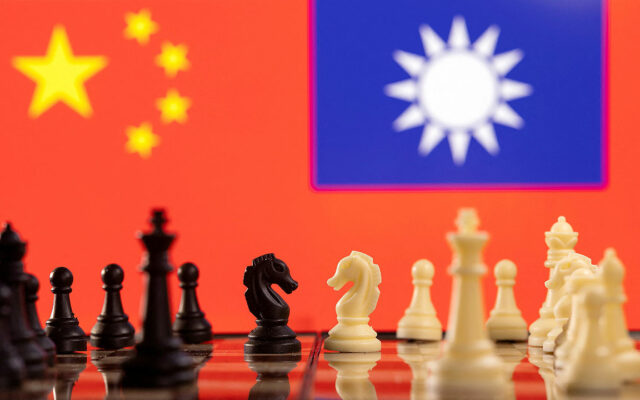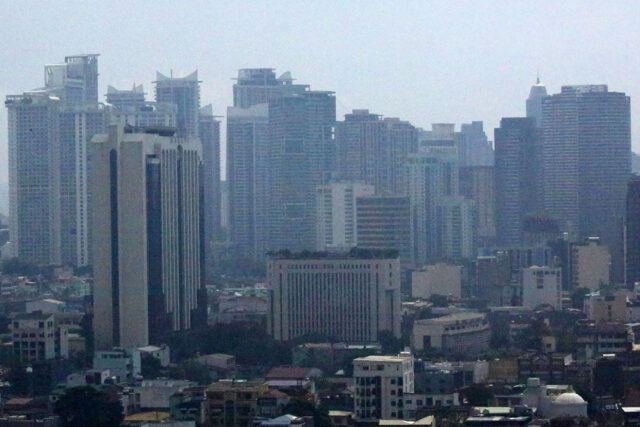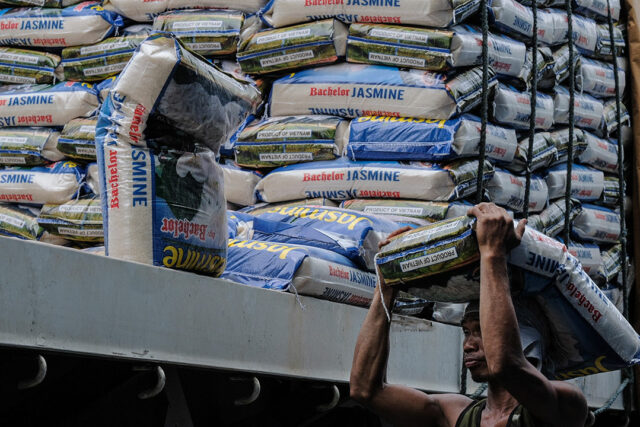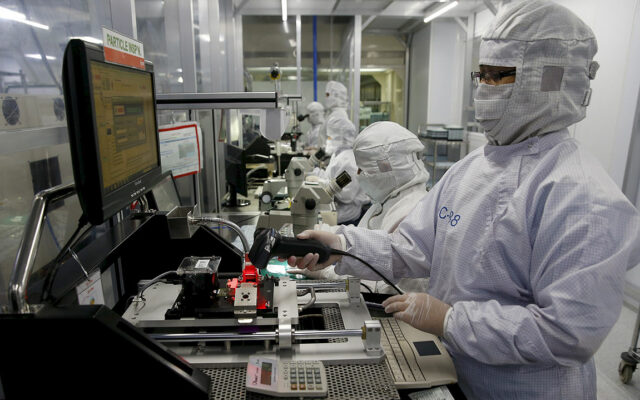A decade of Jokowi: Indonesia’s democracy icon leaves illiberal legacy, critics say
JAKARTA – In 2014, then presidential hopeful and outsider Joko Widodo attended packed campaigns with a white ribbon warning against election fraud tied around his head.
At the time Mr. Jokowi – as the president is known – symbolized democracy and change, embodying the hope of a better, cleaner Indonesia.
After two terms and a decade in power, he has left an indelible mark on the nation of 280 million, presiding over a period of strong economic growth and massive infrastructure development. But critics say his rule also has been marked by a rise in old-time patronage and dynastic politics, and the diminished integrity of courts and other state institutions.
Analysts say the trend may continue under President-elect Prabowo Subianto, a member of the old elite that ruled Indonesia before Mr. Jokowi and an ex-special forces commander who was dismissed from the military amid speculation of human rights abuses, assertions he has denied.
“Widodo has done a lot of damage to democratization in recent years,” said political analyst Kevin O’Rourke. “It’s hard to see how the recovery can come about.”
For a man once celebrated for his lack of ties to Indonesia’s powerful military and civilian oligarchs, Mr. Jokowi leaves office facing accusations he has tried to change laws to benefit his family, and co-opt state bodies to control his opponents.
Spokespeople for the president’s office did not respond to requests for comment. Mr. Jokowi said in July that democracy was thriving in the country, citing the holding of elections and freedom of speech.
Once a furniture manufacturer in the city of Surakarta, Mr. Jokowi rose from mayor to Jakarta governor before he was elected president in 2014, defeating Mr. Prabowo. He beat Mr. Prabowo again when he was re-elected in 2019 but then made him his defense minister.
When Mr. Jokowi steps down on Oct. 20, his legacy will importantly include leaving Indonesia in the hands of Mr. Prabowo, the former son-in-law of authoritarian ruler Mr. Suharto and the son of a former cabinet minister.
“He’s brought about the empowerment of Prabowo and that’s already jeopardizing Indonesia’s democratic institutions,” said Mr. O’Rourke.
TERM LIMITS
Mr. Prabowo has in the past advocated returning to an earlier version of the constitution where the president is not directly elected by the people.
Indonesia adopted term limits after Suharto’s three-decade rule, marred by corruption and nepotism, ended in 1998 amid the economic and political chaos triggered by the Asian economic crisis.
This March, Mr. Prabowo described democracy as tiring, costly and messy but he has not recently referred to reviving the old constitution.
Spokespeople for the president-elect did not respond to requests for comment.
It was with great promise that Jokowi came to power a decade ago, hailed at the time as a man capable of making real change.
And for the first term he did, said his former deputy chief of staff, Yanuar Nugroho.
“Jokowi’s first period is when he really delivered what he promised,” he said, including an improved national health insurance scheme, which now covers more than 90% of the population, and mammoth infrastructure development.
During the Mr. Jokowi years, Indonesia posted solid economic growth and low inflation and successfully courted foreign investors to develop its domestic mineral processing industry, notably in nickel, a key component in electric vehicle batteries.
A distinct shift came in Mr. Jokowi’s second term when he consolidated power and his aides began talking about a possible constitutional change to allow him a third term, and when that went nowhere, a term extension, according to many media reports.
Neither idea bore fruit, and Mr. Jokowi eventually urged government ministers to stop talking about him staying in office.
Another worrying sign, say academics and critics, is how the Jokowi administration has used institutions such as courts, the anti-corruption body and the attorney general’s office for political gain. The president’s office did not respond to a request for comment.
COURT RULING
The critics say the president’s supporters have deployed threats of corruption charges to keep opponents in line, including rival party figures and government critics. The sudden resignation of Golkar party chief Airlangga Hartarto in August and his replacement by a Jokowi loyalist was among the cases where legal threats were deployed for political gain, media reports said.
Airlangga declined comment. Mr. Jokowi’s office said his decision to resign had nothing to do with the president.
“What we’ve seen is the president growing confident because he’s learned that he can actually get away with it,” said Sana Jaffrey, a research fellow at the Australian National University (ANU).
The integrity of the judiciary came into sharp focus last October when the constitutional court – at the time headed by Mr. Jokowi’s brother-in-law – issued a ruling that allowed the president’s elder son, 37-year-old Gibran Rakabuming Raka, to successfully run for vice president by changing age requirements.
Protests erupted this August, after parliament proposed more election changes that would have allowed Jokowi’s younger son Kaesang to run in regional elections in November. Lawmakers then abandoned the plan.
“It’s as if he erased all the good things that he has done,” said his former staffer Mr. Yanuar, who joined the protests.
Still, Mr. Jokowi remains immensely popular. His approval rating fell to its lowest level this year, a poll by Indikator Politik Indonesia showed last week, with the outgoing leader retaining 75% support, higher than the average over his two terms in office.
Reflecting on his decade, ANU’s Jaffrey said Mr. Jokowi has taken Indonesia right to the edge, but not yet into “competitive authoritarianism”.
“In a system like that, all the structures of democracy exist… but none of them are meaningful”, she said.
That means Mr. Prabowo will inherit a country more powerful and less accountable than it has been since 1998, when its reform period began, she said.
Mr. O’Rourke, the analyst, said: “A return to Suharto-era political structures is likely. Prabowo has made clear that he will brook very little dissent.” — Reuters






 I have workshops in Ayala Museum. We work with the collections of the Ayala Museum. There’s Amorsolo, Juan Luna, Lozano. I tour people around, my students in particular. When I tour them around, I tell them about the factors about the artworks. The “stylism” at the time.
I have workshops in Ayala Museum. We work with the collections of the Ayala Museum. There’s Amorsolo, Juan Luna, Lozano. I tour people around, my students in particular. When I tour them around, I tell them about the factors about the artworks. The “stylism” at the time. My work in Kinetix+ was commissioned almost by the end of 2022 and I finished it in the latter part of 2023 which was revealed to the public during the gym’s soft launch in October 2023. I asked for a creative brief. That’s what I always do. My client asked me if I can portray body builders in motion doing workouts. He wanted the color to be in gray, use monotones to fit the interior of Kinetix+, more on lines, and no faces. I went through several studies using ink on paper and acrylic emphasizing on movements while I was guided on the proper forms. First, I also textured the canvas with an acrylic medium. To add more depth and layers. I enjoyed that process. That’s where you can show less is more in grayscale or black and white. It’s big but when you look closely, you can see the depth, the texture. The lines that I created were powerful because the lines I made were suggestive. The ones that were lifting the barbell, I really showed the raw energy. Even the ground was exploding. The ones that were bench-pressing, there were lines pointing up to create an impression that there was struggle. You can tell a lot by doing the simplest things, lines then black and white. It was right not to put faces on the subjects to represent everyone. The linear element gives quality about the movement and power. I really appreciated my client’s attention to detail and it really helped me understand the science behind it. When I say science, the correct postures like in the three major depictions of the series deadlift, back squat and bench press since we both agreed that my paintings will not just be mounted to adorn Kinetix+’s walls but also serve as a visual guide. Kinetix+ is more than simply a gym; it’s a sophisticated and smart gym with professional and skilled coaches to help any fitness enthusiast. Going back to the other three paintings, the decision not to include faces is really appropriate. It depicts as if the lifters are truly zoned in. In addition, I developed a rationale for the greyscale portrayals of the figures in my series. Grey denotes control, insight, and self-worth, all of which gym-goers strive for. They would feel more skilled and exemplary after completing Kinetix+’s training.
My work in Kinetix+ was commissioned almost by the end of 2022 and I finished it in the latter part of 2023 which was revealed to the public during the gym’s soft launch in October 2023. I asked for a creative brief. That’s what I always do. My client asked me if I can portray body builders in motion doing workouts. He wanted the color to be in gray, use monotones to fit the interior of Kinetix+, more on lines, and no faces. I went through several studies using ink on paper and acrylic emphasizing on movements while I was guided on the proper forms. First, I also textured the canvas with an acrylic medium. To add more depth and layers. I enjoyed that process. That’s where you can show less is more in grayscale or black and white. It’s big but when you look closely, you can see the depth, the texture. The lines that I created were powerful because the lines I made were suggestive. The ones that were lifting the barbell, I really showed the raw energy. Even the ground was exploding. The ones that were bench-pressing, there were lines pointing up to create an impression that there was struggle. You can tell a lot by doing the simplest things, lines then black and white. It was right not to put faces on the subjects to represent everyone. The linear element gives quality about the movement and power. I really appreciated my client’s attention to detail and it really helped me understand the science behind it. When I say science, the correct postures like in the three major depictions of the series deadlift, back squat and bench press since we both agreed that my paintings will not just be mounted to adorn Kinetix+’s walls but also serve as a visual guide. Kinetix+ is more than simply a gym; it’s a sophisticated and smart gym with professional and skilled coaches to help any fitness enthusiast. Going back to the other three paintings, the decision not to include faces is really appropriate. It depicts as if the lifters are truly zoned in. In addition, I developed a rationale for the greyscale portrayals of the figures in my series. Grey denotes control, insight, and self-worth, all of which gym-goers strive for. They would feel more skilled and exemplary after completing Kinetix+’s training.
 Other Key Highlights @ ITAP 2024
Other Key Highlights @ ITAP 2024




